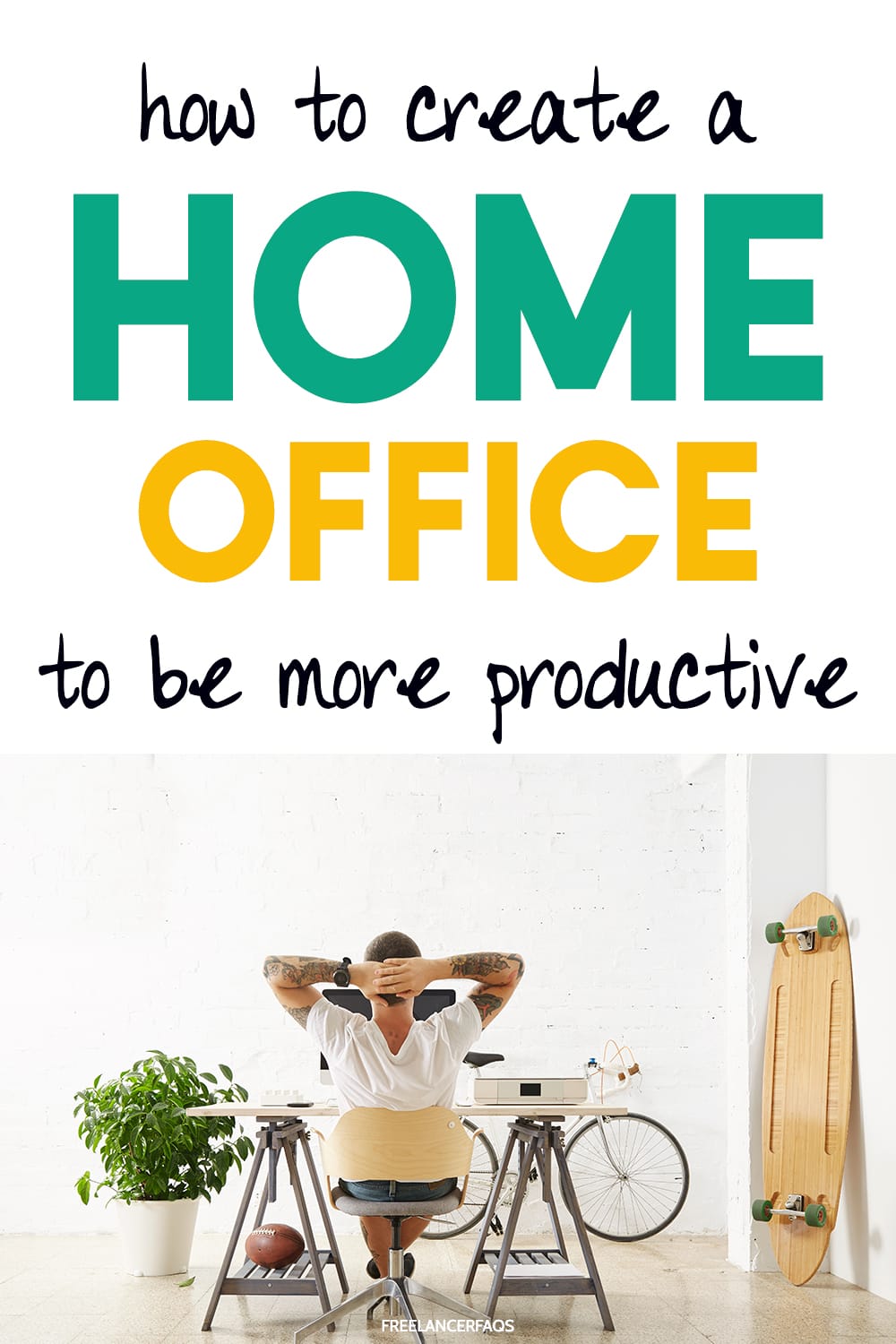Statistics indicate a rise in the number of people who work from home as a remote worker.
This report shows that before Covid-19, 7 million people in the US worked from home, which is 3.4% of the population.

It also states that over the past five years, the number of people working remotely has grown by 44%.
With more people working from home, there is a need for a healthy, dedicated, or ergonomic workspace.
Another report by the State of American Workplace states that 43% of US employees work remotely.
The current pandemic raking the world has further increased the number of people who work from home.
With more people working from home, there is a need for a healthy, dedicated, or ergonomic workspace.
Your home office setup needs to be organized for maximum productivity.
Sadly, most freelancers don’t understand the need for a healthy workspace.
It’s assumed that since you work from home, you could work from about any surface: the bed, dining table, kitchen table top, coffee table, anywhere. This might seem convenient but could pose serious health hazards now or in the near future.
Why Do You Need a Healthy Home Office Setup?
A properly set up workspace at home is vital to your success as a freelancer.
It increases focus and concentration, productivity, reduces distraction from family.
When you are in your home office, it signals to them to stay off and puts your brain in work mode unlike working from your dining table.
A poorly organized workspace affects your health, productivity, and zeal, causing challenges such as eye strain, weight gain or loss due to a sedentary lifestyle, neck pain, stress, back pain, work-related muscular-skeletal disorder (WMSD), wrist pain, Carpal Tunnel Syndrome (CTS) and Repetitive Strain Injuries (RSI).
How Do You Create a Home Office Setup That’s Healthy and Productive?
Your home office setup shouldn’t take too much as you only need the basics.
Basic items such as a table, chair, computer (desktop or laptop), lightings, and book stand are adequate for a home office set up.
However, for a healthy workspace, these items must meet certain specifications.
They may not be brand new or expensive but should meet your taste and provide the comfort you need to be productive. For an ergonomic office do-over, you need an ergonomic chair, table, keyboard, and proper lightings.
Invest in an Ergonomic Office Chair
Ever wondered if you should dump your regular dining or kitchen chair for a proper office chair?
Do you wonder why your back, neck, and shoulders ache after sitting for long at your desk?
Then you should take a proper look at your work chair, is it suitable?
Does it afford you the right sitting posture for work?
Every occasion has its type of chair, likewise work. Not all chairs are suitable for office work or typing because an office chair should afford you comfort and the right sitting posture. Your chair determines your sitting posture.
If you are seated leaning forward towards the table with your back hunched, then your sitting posture is wrong and it will affect your lower back in no time.
Proper sitting posture is where you sit with your feet flat on the floor, the small of your back balanced in the backrest, supporting your upper body.
Your back should be straight and hand rests no higher than your elbow level when seated.
Proper sitting posture can improve your overall health by reducing the risks associated with your musculoskeletal health. To avoid these risks,
- Get an ergonomic office chair. Office chairs are built for comfort with your sitting posture and musculoskeletal health taken into consideration. A good chair should be adjustable; the seats, height, back, and armrest should be adjustable to suit your peculiarities. A chair with rollers will enable you to change positions without having to stand up and shift chairs.
- Take regular breaks. Break up your work hours into regular intervals. Say, you could take ten minutes break every thirty minutes. This enables you to stretch and also promotes blood circulation.
- Stand or use a treadmill. You may choose to go with an adjustable table so you can work while standing. You could also use a treadmill while you work. There are customized treadmills that fit perfectly under your worktable.
- Sit on an exercise ball. A yoga ball is a good alternative.
The Right Office Table/Desk
 When you are creating your home office setup an ergonomic desk must accompany an ergonomic chair.
When you are creating your home office setup an ergonomic desk must accompany an ergonomic chair.
It is easy to focus on getting ergonomic chairs, forgetting about the table but both work together to improve your wellbeing. The right table helps improve wrist placement while typing, sitting posture, and eye strain.
To get an ergonomic office desk, consider
- The height of everyone who will be using the table. An adjustable desk is best for multiple users but where you are the only user, consider your height. It is important that your height is proportional to your work desk because desk height affects your sitting posture, eyes, and leg space, and wrist placement. A desk that is too low causes stiff neck, cramped leg space, and wrist extension. If it is too high, it leads to wrist flexing, eye strain, and neck pain. The right height reduces all of these risks.
- The type of computer system you will be using. Are you using a desktop, laptop, or both? What is the size of your system?
- Will you be using your table in different positions like standing, sitting, and squatting? Then go for a convertible or adjustable table. With an adjustable desk, you can switch to whatever position suits you. It is more convenient than having different tables for different positions.
- Keyboard Position. This is an often overlooked part of office ergonomics. The placement of your keyboard directly affects your wrist placement and movement and therefore it should not be too low or too high. If you are using a laptop, consider a table with a flexible, adjustable keyboard tray, placed right.
For optimum benefits, go for an adjustable table if you can find one.
This is because most tables are made to fit six-footers, making it difficult for those who are not as tall or taller. Mayo Clinic suggests a desk height of 86cm (34 inches) for optimum comfort. Ensure underneath your table is cluster free for free leg movement.
Don’t Forget the Lighting
Office lighting in your home office setup is as important as furnishing and should be considered while setting up an ergonomic workspace.
Lighting is crucial to your eye health and productivity and should be adjusted to suit your specific lighting needs. Everyone has different lighting needs in that some people need more or less light than others for optimal eye health.
The type and how much light you need also largely depends on the type of work you do, the location of your workspace, and your age.
Younger people will work better under brighter light than people over 50. Lighting can either lead to or prevent Computer Vision Syndrome (CVS). CVS presents as blurred vision, head and eye ache, eye irritation (dry eyes), fatigue, and neck ache.
For best results,
- Avoid bright fluorescent light above your workstation. Overly bright lights reflecting on your screen can cause eye strain
- Adjust your screen resolution to avoid eye strain
- Place your monitor screen at right angles to bright lights, use blinds to keep bright sunlight out
- Use desktop lamps to illuminate reading and writing material when using paper
Keyboard is Key
Sitting at your desk, ready to type, you notice that your hands rest unnaturally on your keyboard and mouse, mostly with the wrist tilted slightly upwards.
This could lead to health issues. Long, repetitive hours of typing with your hands in awkward positions can cause pressure and pain, which could lead to repetitive strain injuries like Carpal Tunnel Syndrome, wrist, shoulder, arm, and neck pain.
Learn how to avoid hand pain in this video from Elna Cain:
You can save yourself the strain and pain by investing in an ergonomic keyboard.
These keyboards are built in ways that your hands rest naturally on them, without exerting pressure on the Carpal Tunnel.
A desk with a well-positioned keyboard tray could also save you the pains of Repetitive Strain Injuries.
Your Home Office Setup
Health proofing your home office keeps you healthier and increases your productivity. You don’t want to lose precious work hours and money to work-related stress and illnesses do you? Check your workspace and effect necessary changes!



Leave a Reply